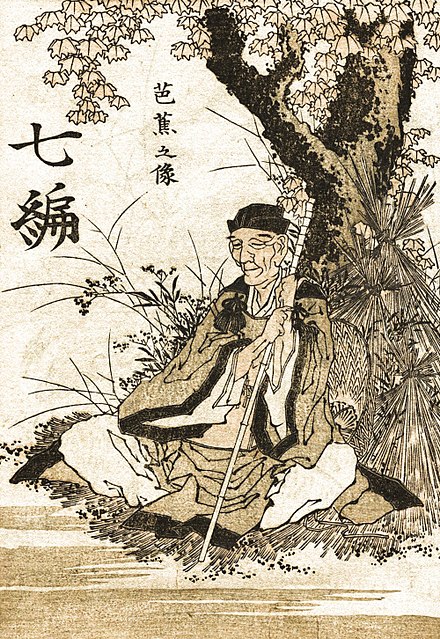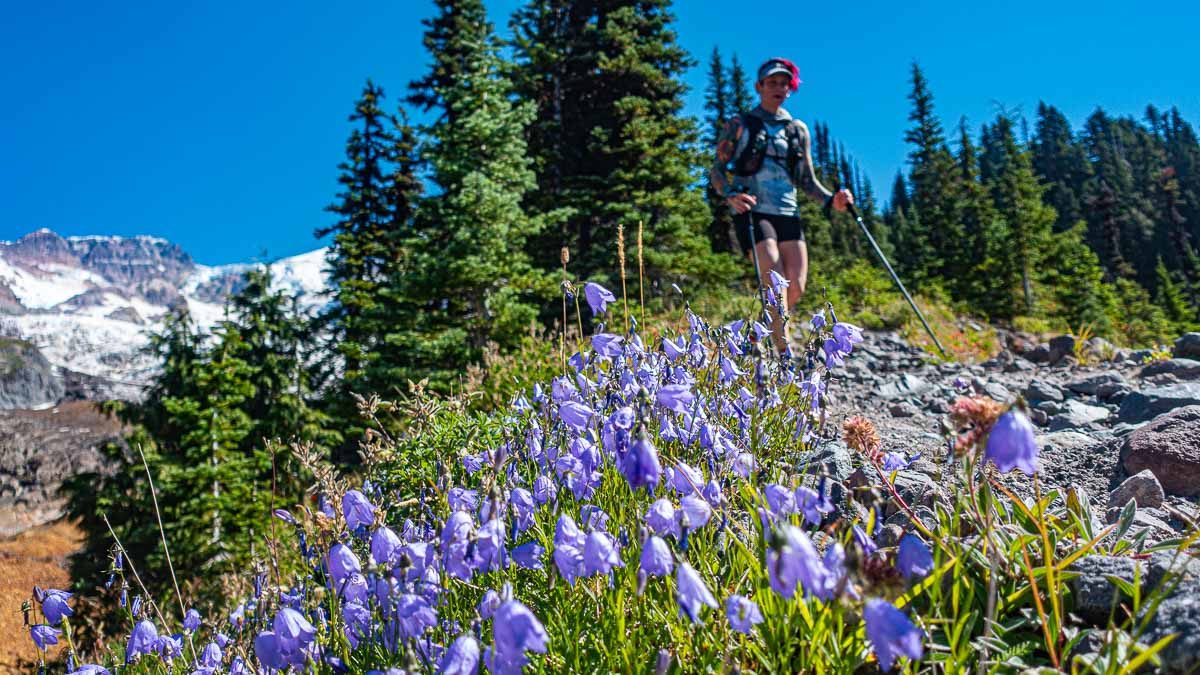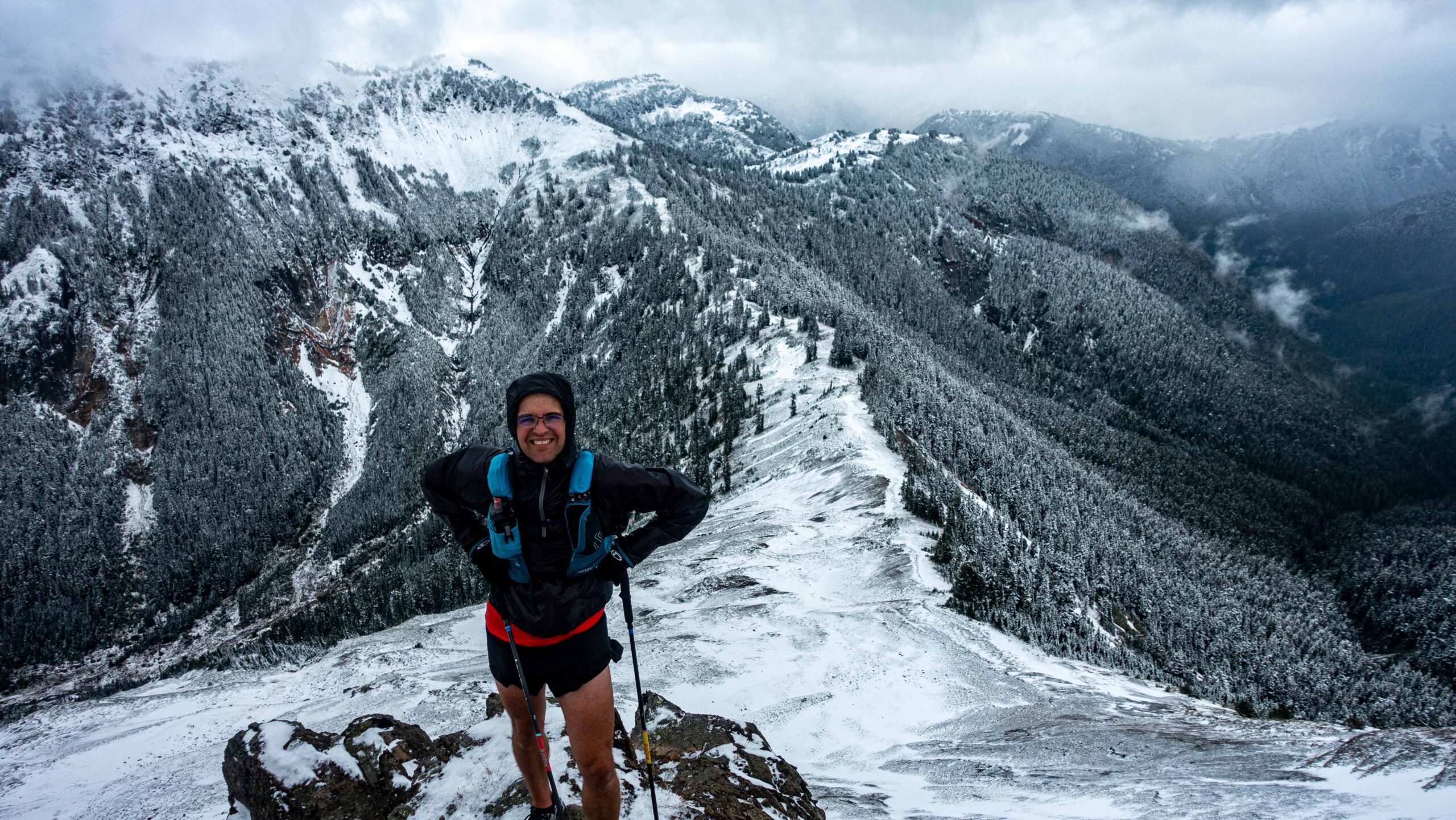Our 2st annual “Reveal” party takes place Sunday, November 7th 2022. We’ll celebrate the highs of the ’22 Aspire season and look forward to next years adventures togeteher. As part of the festivities, we’re holding a mountain inspired Haiku contest. A huge THANKS to Ian Ramsey for providing some backstory and a great how-to on the art and accessibility of Haiku poems.

“The moon and sun are eternal travelers . . every day is journey, and the journey itself is home” -Matsuo Basho (1644-1694)
At dawn on May 16, 1689, a Japanese poet named Matsuo Basho filled his pack with a few essentials and started walking, with Mount Fuji visible on the horizon, across Japan on a trip that last for months. He would cross the Shirikawa barrier and walk, in all kinds of weather, deep into the mountains of northern Honshu-what was known as the Oku, meaning “interior” or “deep north.” His travel diary and poems from the trip, which would eventually be published as Oku-no-Hosomichi or “The Narrow Road to the Interior,” set the standard for Haiku poetry, a short and simple-but deeply meaningful-form that is commonly written to this day all over the world. Basho’s Zen-influenced writing, which often reflected on the natural world, seasons and mountainous landscape, often resonates with trail runners, backpackers, climbers, farmers, and anyone who spends time in wild places. These Haiku poems, for instance:

How many rising
clouds collapse and fall on
This moonlit mountain

All night long
Listening to autumn winds
Wandering in the mountains
So many elements of trail and ultrarunning-foot travel, mountains, nature, remoteness, quiet-are also inherent to Haiku. Surely most trail runners can relate to this poem by Basho:

Traveling this high
mountain trail, delighted
by wild violets
Or any mountain runner faced with some big vert ahead of them understands this Haiku by one of Japan’s other great Haiku poets, Issa:

O Summer Snail,
you climb but slowly, slowly
to Mount Fuji’s summit
So What is a Haiku and How do you Write One?
The Concept:
First off, it’s simple. And that’s the beauty of it: Less is more. Just one or two images broken up across three lines, each with a few syllables. Basho was deeply influenced by decades of Zen Buddhist meditation practice (he actually traveled disguised as a monk so that bandits wouldn’t attack him) and there is an inherent clarity and simplicity to the form. It’s why third graders and Septuagenarians alike can write in this most democratic of forms.
The Mechanics:
A Haiku consists of seventeen syllables across three lines in a 5, 7, 5 pattern. Often a haiku will also include a seasonal reference and some description of nature. The season reference doesn’t have to name the season, but can allude to it (i.e. snow=winter, foliag=fall, etc.)
The Feeling:
Haikus tend to capture a single moment in a reflective or epiphanal way, and they can sometimes be tinged with melancholy or humor.
Here’s a great example by Basho that includes the 5-7-5 syllables, the seasonal reference, and connection to nature:

Snow fallen on snow, (5)
and this evening, the full moon (7)
of late November (5)
Notice that there are no great wise pronouncements or big fancy words. Just simple, present, vivid images, with a connection to the season.
The How:
- Sit or stand somewhere outside, or imagine yourself outside. Quietly observe.
- Write down what you see, hear, smell in one moment very concrete images. Green Grass. Whistling wind. Gray skies.
- Take one or two of those images, along with some reference to the season and break them into three lines of 5 syllables, 7 syllables, and 5 syllables. Let the images speak for themselves.
- Don’t worry TOO much about getting the syllables perfect or punctuation. If you have four syllables in your last line, the Haiku police won’t coming knocking on your door. This haiku is a great reminder:

To convey one’s mood
in seventeen syllables
is very diffic
Takeaways:
Writing haiku is a great exercise in presence, attention, and anyone can do it. While you can do a deeper dive into Japanese aesthetics and Haiku mechanics, you don’t have to. You can simply notice what you notice and put it on the page. It’s a way to connect with nature. The process is ultimately more important than the result.
Feeling Inspired? Get the details on how to submit your own Haiku for the Aspire Reveal Party: https://us02web.zoom.us/webinar/register/WN_wyENN5jcQGWgA0r2C4ZzPg
References:
- The Haiku in this article were translated by Sam Hamill, Nanao Sakaki, RH Blyth, and Ian Ramsey
- Narrow Road to the Interior-Matsuo Basho, translation by Sam Hamill
- The Spring of my Life and Selected Haiku-Kobayashi Issa, translated by Sam Hamill
- Inch by Inch-45 Haiku by Issa translated by Nanao Sakaki
- The Essential Haiku-Edited by Robert Hass

Ian Ramsey is an ultrarunner, writer and educator based in Maine who has spent twenty five years exploring wild places in the Pacific Northwest and Alaska. He directs the Kauffmann Program for Environmental Writing and Wilderness Exploration, and guides running and kayak trips around North
America. For more information, go to www.ianramsey.net.
